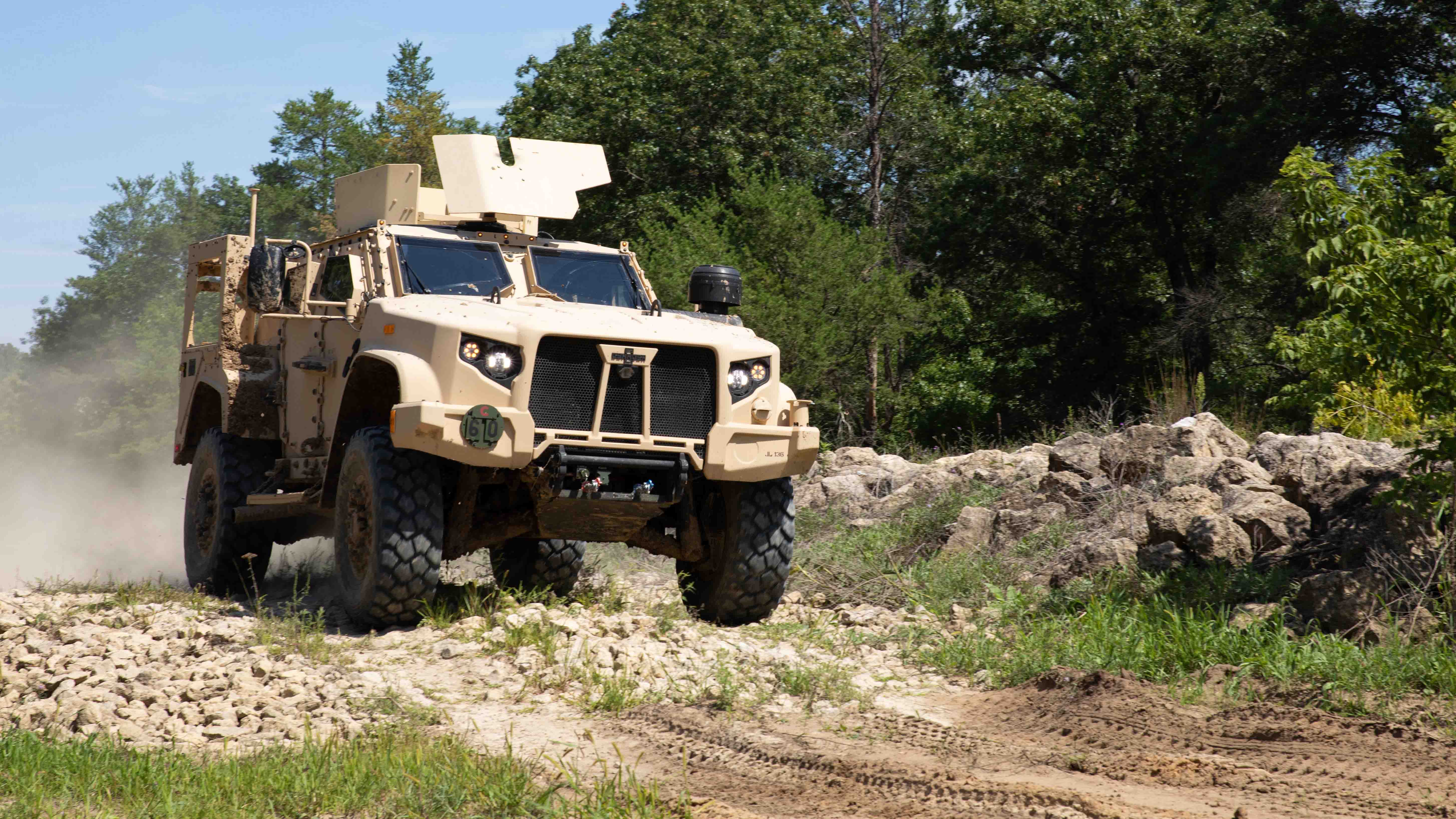Work Continues to Electrify Army Vehicles
Work Continues to Electrify Army Vehicles

As the Army works to electrify its combat vehicles, it will not compromise combat effectiveness, a senior Army leader said.
“Focusing on how our equipment will perform when it really matters in war is our guiding principle,” said Douglas Bush, assistant secretary of the Army for acquisition, logistics and technology, during an event on the Army’s plan to develop electric ground vehicles.
“That is always the No. 1 priority, because in combat, in direct fire contact with the enemy, is when our equipment has to be better than the other side’s,” Bush said during the event hosted by the Atlantic Council.
The benefits of electrifying the Army’s combat vehicles include reduced fossil fuel consumption, less need for infrastructure to support the demand and the ability to more efficiently move items such as ammunition, food, spare parts and other supplies and equipment.
Bush added that storing and generating organic power on vehicles is being worked out so that the Army can incorporate new capabilities such as active protection systems to counter drones, advanced electronic warfare systems and the ability to export power to other ground systems and vehicles.
Anti-idle kits, which will save fuel on vehicles that currently must idle to operate communications and other electronic equipment, are being developed and tested for the Joint Light Tactical Vehicle. They also are under development by industry for the Family of Medium Tactical Vehicles. Kits will also be retrofitted for older vehicles by fiscal 2025, Bush said.
Other areas under development are an electric light reconnaissance vehicle, a lead effort that will start rapid prototyping in fiscal 2024, and a transition to hybrid electric drive for the Humvee and JLTV fleets. Two hybrid Humvees and one JLTV are being prototyped now, and if they’re successful in testing, they could go into production by fiscal 2027 and 2028, respectively, Bush said.
Bush said he expects optionally manned vehicles to be fully hybrid electric, but electrification of heavy vehicles, such as the M1 Abrams tank and the Bradley Fighting Vehicle, will take longer. Multiple research and development efforts to develop hybrid electric power for heavy vehicles are underway, he said.
There are two hybrid electric Bradley vehicles that are in the final stages of testing, he said, adding that they “have demonstrated significant fuel reduction and better capability to accelerate, operate silently and export power off of the platform onto other vehicles.”
The Army also is working on an effort to eliminate the need for generators on the battlefield. This is part of the Secure Tactical Advanced Mobile Power, or STAMP, project, which is an effort to integrate 120-kilowatt power generation and microgrid capability on the Family of Medium Tactical Vehicles truck platform that could power systems and command posts without towed generators.
“Every one of those generators has to have fuel provided for it. If we can do this, this would not only free up the Army from having to have fuel for those generators but also have vehicles that we could move around very quickly to be able to provide this kind of power for all sorts of things,” Bush said.
The Army Climate Strategy that was released in February, Bush noted, will not compromise vehicle lethality. “It's not a question of one or the other,” he said. “We can make progress on electrification and climate goals while also improving our climate strategy.”

